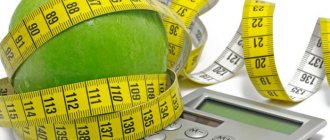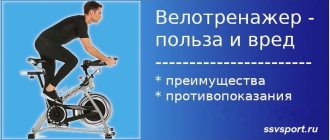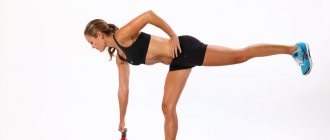The benefits of Zumba for weight loss
Zumba is a workout set to Latin American music, incorporating movements from African dance and hip-hop.
It forces all muscle groups to work, evenly distributing the load. The desire to become slim has already brought many representatives of the fair sex into the ranks of the Zumba movement, because it not only tightens the whole body, but also charges with positive emotions. It is the question of whether it is possible to lose weight with Zumba that makes people look for information about this area of fitness. Any trainer will tell you how many calories the average person burns in one session. This is about 500 Kcal, but it all depends on the type of training, its intensity, as well as on the characteristics of the human body.
Does doing exercises at home help you lose weight? Spending time at home with light and enjoyable physical activity accompanied by music helps burn calories, improve well-being and mood. Positive reviews show that Zumba fitness classes at home are very popular and effective.
Like any phenomenon, the Zumba fitness complex has its pros and cons.
Pros:
- energizes, helps maintain a positive attitude towards life;
- involves all muscle groups;
- helps burn extra calories and stay fit;
- this is an excellent set of exercises for weight loss at home or in the gym;
- accessibility for people with any level of physical fitness;
- does not impose strict requirements for performing movements, so a beginner can easily join an already formed group;
- suitable for people of all ages, including the elderly;
- you will gain new friends and self-confidence;
- Practicing to music is a real pleasure.
Minuses:
- you need to have a sense of rhythm and a love of music;
- to get the desired effect, you need to exercise regularly;
- not suitable for professional athletes who need more intense exercise.
Stories from people around the world speak not only of the effectiveness of Zumba for weight loss, but also of its positive impact on life in general. The Zumba movement invites anyone to become an instructor by completing quick training and receiving an official certificate. And by becoming a certified trainer, you receive full support from the official community of which you have become a member, as well as the opportunity to earn money while doing what you love.
What is Zumba?
The Zumba fitness direction refers to interval aerobic cardio dance training. Classes are held in a group; the style is popular among women, since cardio accompanied by music evokes a lot of positive emotions.
The movements are taken from Latin American dances: bachata, salsa, merengue, cumbia. The dance is complemented by squats, lunges, jumps, and twists. This increases the load and helps burn up to 500–700 kcal in 60 minutes of training.
Zumba never stops. Each lesson turns into a dance lasting 50-60 minutes. Without volitional effort in the classroom the following is achieved:
- fat burning,
- activation of muscle tone,
- improvement of joint condition,
- increasing endurance of the cardiovascular system,
- increase in vitality.
The interval nature of the workout, when the pace either speeds up or slows down, allows you to burn more calories than exercise at a monotonous rhythm. A large number of twisting movements at a fast pace forms a thin waist and a straight back.
The pace of the workout is set by the music. Slow bachata gives way to temperamental salsa, causing the heart to increase its contraction frequency (HR). The pulse increases with fast music to 150 beats per minute.
After 3-5 minutes of training in the rhythm of salsa, calm cubmia movements follow, and the heart rate decreases to 120 beats/min. This irregular rhythm allows you to speed up your metabolism and speed up weight loss.
During a 60-minute session, the heart rate lies primarily in the fat burning zone and corresponds to an average of 120–130 beats/min.
Learning occurs in every lesson. This helps not only improve dance skills, but also develop the brain. During dance classes:
- hearing, vision, proprioception are activated - the ability to control the position of the body in space,
- the production of the “happiness hormone” serotonin increases,
- new connections are formed between neurons responsible for muscle memory and spatial orientation.
Emotional uplift dulls fatigue, forcing muscles to work with full efficiency. Cardio involves all muscles and joints.
Zumba is especially useful for joints. Articular cartilage tissue does not have its own circulatory system; it is nourished by the surrounding muscles.
Movements with a small amplitude and moderate load increase blood circulation in the muscles surrounding the joints and supply the cartilage tissue with nutrients and oxygen.
Main directions
Since the emergence of this dance style, many varieties of Zumba fitness have appeared.
Varieties of Zumba:
- Basic or Fitness - classic cardio dance workout to dance music.
- Strong - power zumba, a new direction that uses elements of kickboxing and isometric exercises.
- Toning is a dance workout with weighted maracas for strength training and music and noise accompaniment.
- Aqua - classes take place partially or completely in water, which increases the resistance of the environment when moving.
- Pilates - the aerobic exercise of Zumba is combined with the stretching movements of Pilates.
- Step - cardio training using a step platform.
- Gold is a dance cardio program designed for older and untrained people.
- Kids is a Zumba program designed specifically for children and teenagers, including game elements.
During the existence of the Zumba direction, the musical range of the program has expanded, and the following dance styles have been added to the list of dance styles:
- Zumba-Afro - dance cardio to the rhythm of African drums;
- Zumba Tribal is a cardio dance using elements of oriental belly dance.
Varieties
Today there are many directions of Zumba, each of which has several other branches. Each set of exercises is unique, because the instructor always brings something different to the program. Among this diversity, the following main types can be distinguished:
- Zumba Toning. The exercises are performed using maracas - special dumbbells filled with sand. When moving, they make a sound in time with the music, which gives the activity a special flavor. Cardio and strength loads change, with a change in musical directions. Zubma toning is primarily aimed at making your body toned.
- Zumba Pilates. This direction will please both lovers of measured Pilates classes and those who like fiery workouts to music, as it includes alternating exercises in both areas of fitness. Zumba Pilates is very effective for weight loss.
- Eastern Zumba. The training takes place with elements of oriental dances, accompanied by appropriate music. Helps strengthen the abdominal and thigh muscles, burning excess fat and creating an ideal figure.
- Zumba Basic or Zumba Fit. Includes classic fitness with music. Zumba fit acts as a cardio workout, forcing all muscle groups to work, strengthening the cardiovascular system. Such workouts are called Zumba Cardio Dance.
- Zumba Aqua. Exercises are performed on the shore of a reservoir or in water, which gives additional stress to the muscles, strengthens the respiratory system and intensively promotes weight loss.
- Zumba Step. For additional load, the complex includes step exercises.
- Zumba Kids, Zumbatomic, Zumbini are types of complexes for classes with children of different age groups. It's like a game with fun music.
- Zumba Gold. This is a fitness program for older people or those with disabilities, as well as those who are undergoing rehabilitation after illnesses and injuries.
Zumba Gold, or a fitness complex for seniors who have entered their golden age, first gained popularity in Western countries, and is now gaining momentum in Russia. Fitness for the elderly relegates its effectiveness for weight loss to the background, giving way to goals such as strengthening muscles, developing flexibility, maintaining good coordination and general tone of the whole body. As a result of regular visits to Zumba Gold, people over 50 years old receive:
- positive emotions;
- communication with like-minded people;
- strengthening the muscular system;
- improvement of body control functions;
- maintaining the health of the cardiovascular and respiratory systems;
- increasing life expectancy and quality of life.
There are also Zumba Gold programs for people with limited or impaired health. With the help of such projects, the Zumba movement has an important social function in society.
Ballroom dancing
Ballroom dancing includes partner dances such as the waltz, foxtrot and tango. Even salsa dancing can be considered a type of ballroom dancing.
Although it hosts ballroom dancing competitions, it is also a great workout for amateurs. Check with your local community center or dance centers near you to see if they have ballroom dancing classes you can take.
Ballroom dancing can provide the following benefits:
- increased muscle strength, especially in the core, legs and back
- increased flexibility
- improved balance
- cognitive benefits such as memory training while working on remembering steps
It's a low-impact dance, so it's a great way to get some aerobic exercise if you have joint problems.
Where is the best place to study?
You can exercise in any conditions. The number of calories burned does not depend on the conditions in which the activity is carried out, but on the level of intensity of physical activity.
No special equipment or large space is required. It’s not scary if you lack an ear for music and a sense of rhythm.
For Zumba, choose clothes that do not restrict movement
The form of clothing is not particularly important. The main thing is that it allows you to move freely and does not restrict your movements.
In Zumba there is no competition; there is no comparison of who can dance better or jump higher. The Zumba fitness style is a dance party in good company, among friends, which helps you lose weight easily, without volitional effort on yourself.
In a studio
It is better to study in a group and under the supervision of an instructor. A beginner is able to quickly learn movements and adapt to intense loads while practicing in a studio.
And the presence of a trainer ensures safe execution of the exercises. In Zumba, as in any form of fitness aerobics, it is important:
- perform movements technically correctly;
- maintain posture;
- monitor your breathing and heart rate.
Although physical exercises are performed in front of a mirror, it is difficult for a beginner to adequately assess his condition. In the first days of classes, the instructor’s recommendations on diet, eating and drinking to achieve weight loss are important.
At home
Doing Zumba on your own is not as fun as doing Zumba in a group. There are no technical difficulties. But at home, training performed by a beginner is performed more like exercise to dance music.
And although there is always a mirror at home to monitor your posture, learning to perform the movements correctly on your own is much more difficult than repeating them after an instructor. But a video instructor cannot replace live communication with a trainer.
Another difficulty is that at home it is impossible to feel the energy of the dance hall, which is always created during Zumba classes and serves as a powerful energy boost during classes.

Beginners cannot control their reflection in the mirror and monitor their pulse at the same time.
The training is effective for fat burning at a heart rate (220 - age) * 65–70%. If you overdo it, exercising at a heart rate of 170–180 beats/min, your health will worsen.
Physical fatigue reduces the barrier function of the immune system, and a person begins to get sick often. As a result, he stops training.
Using fitness training for weight loss at home is an effective and simple way to lose excess weight. To exercise at home, you don’t need to sign up for a fitness center or spend money on clothes and accessories. Home training can take place at a time convenient for you. Exercising at home will save you time and money.
To enhance the weight loss effect, do not forget about proper nutrition. Eliminate sweets from your diet, as well as fatty, fried and salty foods.
Zumba
Zumba is a dance fitness program with Latin American and other international music.
She uses interval training, alternating fast and slow movements. These short bursts of high-intensity exercise will help you burn even more calories than just dancing at a constant speed. And it's a full-body workout, so you can tone and strengthen many of your muscles.
Zumba has many other health benefits, including the following:
- weight loss, average 9.5 calories per minute
- decreased pain sensitivity, according to a 2016 study
- social benefits and sense of community as it is a group workout
Zumba choreography doesn't have to be formal, so you can join in on the go. Many gyms and community centers offer classes suitable for all fitness levels.
Lesson Description
Think of a workout like a dance party: just move to the music and have fun. This is not training in the usual sense of the word. There are no heavy and complex exercises and loads, no professional dance pirouettes. It's like you came to spend time dancing with friends.
If you realized that Zumba is exactly the sport you dreamed of, then here are the basic steps for beginners:
- buy bright clothes and special shoes that are comfortable to dance in;
- find a trainer who has completed training and has the appropriate certificate;
- Once you get to training, stand in front, carefully repeating the movements of the instructor;
- attend training regularly and it will turn into your lifestyle.

The benefits are evident even from low-impact activities: at least you will liberate yourself and begin to move more gracefully. How is Zumba useful for any person? It straightens your posture, improves coordination and the condition of the muscular system as a whole.
In addition, there is no doubt that this complex helps to lose weight, and its effectiveness is confirmed by reviews of millions of people. Yes, yes, exactly millions! Spend just 40 minutes on a fun, pleasant dance, and the results will not be long in coming.
Zumba for beginners
A Zumba fitness class for weight loss is a bit like a dance marathon, the participants of which move freely to the music with pleasure and joy. The complex does not contain complex exercises, professional dance steps, and does not involve heavy loads. In the usual sense, this is not really a fitness workout. The participants simply have a pleasant time together in the company of lovers of dancing and vibrant music.
Principles and rules of a fitness program for weight loss
Zumba fitness for weight loss is a type of aerobics, the class is carried out after preliminary warming up. Regardless of what kind of training you have, whether you are a beginner or an athlete, before the main set of exercises you need to prepare your muscles for the upcoming loads with a preliminary warm-up. In its absence, it is impossible to perform the more complex elements of Zumba correctly and at full strength, which makes it more difficult to achieve the desired loss of extra pounds. Training begins with gymnastics, not dancing.
The duration of each lesson should not be less than an hour, otherwise the load will be insufficient and the positive effects of the lessons will not be fully achieved. If you feel that the complexity of the selected level is excessive and the complex is very exhausting, it is better to switch to lighter type training, gradually get used to the pace, and complicate the movements at your own, individual rhythm. Other basic recommendations from professionals include the following principles:
- To achieve noticeable results, you need to exercise at least three times a week, especially in the first stages.
- You should not overload the body - the first two or three sessions should be devoted to selecting the optimal load.
- After mastering the basic movements, you can move on to additional independent exercises in the gym or at home.
- It is important to maintain a drinking regime - at least 2.5 liters of plain water per day, otherwise the weight loss process will occur slowly.
- It is better to exclude sweets, fried, and fatty foods from your daily diet.
- It is not advisable to exercise when you are feeling unwell physically - it is better to reschedule the workout for another day.
What clothes to choose for classes
It is better to come to training in clothes that are as comfortable as possible for training. Restrictive movements and baggy tracksuits are not suitable in this case. For the top, it is better to choose a T-shirt, sports shirt or top made of natural material; for the bottom, use shorts, sports capri pants or leggings. The uniform should not tighten the body; the main rule of choosing a suit for Zumba is that it should be comfortable to move intensively in, the body should feel free. For shoes, choose lightweight sports sneakers or sneakers.
Training program for beginners
The average duration of classes is 1 hour. At the discretion of the trainer and those involved, the duration of cardio can be increased to 2.5 hours.
Classes of any length include:
- Warm-up part.
- Basic fat burning workout.
- Stretching.
The fitness instructor sets aside special time for strength exercises on the abs and limb muscles. The duration of the lesson can be increased if learning dance steps is required.
Trainings are held 3 times a week. This is enough to master the program, get involved in the process of training and lose weight.
At home, training for a beginner begins with a warm-up, with a gradual acceleration of the pace. Within 5 minutes:
- walk in place with a simple step;
- move with a high hip lift;
- run with the shin whipping backwards;
- jumping on the spot.
And in order to force the muscles to burn more subcutaneous and visceral (internal) fat, the exercises are performed collectedly and energetically. The stomach should be tucked, the back straight, the muscles tense.
Once a week, 15–20 minutes after doing cardio, they do strength exercises designed to strengthen the abs, back, and arms. Good exercises for the back and chest muscles:
- push-ups from the knees from the floor with wide and narrow arms;
- slats - side, straight;
- “Snake” - done while lying on the floor, raising the body on outstretched or half-bent arms;
- “Cat” - back bends are performed while standing on all fours on the floor.
Additional strength load is required for the muscles of the shoulder girdle and arms. Exercises with light weight dumbbells and exercises with an expander are effective.
The leg muscles work with great tension during Zumba. This part of the body does not require additional strength training; the lower extremities require thorough stretching immediately after training.
Good stretching is not only an indicator of flexibility, it is the ability to perform movements in the joints with full amplitude. And the wider and freer the movement, the more actively the muscles work and the more calories are burned.
Exercises
The structure of the fitness lesson will be clear even for beginners. First, you will have some light exercise - a warm-up. It is necessary for the muscles to prepare for the load. This is followed by a block of strength training accompanied by music chosen by the instructor. A set of exercises for squats or push-ups is possible here.
When practicing at home, you can come up with a workout plan yourself, but be sure to always start with a warm-up. Start with jumping and side steps. Complete them with rotational movements and gradually move on to dancing.
The main movements of the Zumba fitness complex are as follows:
- Marching, or rather, dancing in place to the music. First we march with our feet, then we use our arms and hips, and we use the whole body in the dance.
- Two steps right, two steps left. We walk to the music with side steps, now to the right, now to the left.
- "Skating". Putting your hands behind your back and taking a skater’s pose, you need to perform sliding movements in place.
Turn and Lunge:
- place your feet shoulder-width apart, lower your arms along your body;
- bend your elbows, place your left foot on your heel, and lunge with your right foot to the right side and also place it on your heel;
- placing your left foot next to your right, stand on your toes and turn your body to the left;
- repeat the movements in the other direction.
Step and clap:
- place your feet shoulder-width apart, lower your arms along your body;
- step to the right and clap your hands;
- place your left foot next to your right and clap your hands too;
- repeat one more time;
- repeat the same on the other side.
Twist (heel-toe turns):
- place your feet shoulder-width apart, arms along your body;
- bend your elbows, stand on your heels, turn your body to the right;
- stand on your toes and turn your body to the left;
- turn to the right again on your heels;
- turn to the left on your toes;
- repeat the movements in the other direction.
When performing exercises, do not forget that you are dancing.
Zumba is an awesome fitness program for weight loss
Each Zumba fitness complex for weight loss consists of a set of different movements connected in a single chain, which the dancers move on to after a preliminary warm-up. Depending on the type of sports-dance zumba and the level of training of the participants, the training can begin either with calm, smooth movements or more complex Latin American dances, hip-hop or belly dancing. The fact that different styles of movements can be intertwined in one lesson does not mean that they can be performed in any way. You need to do basic movements correctly.
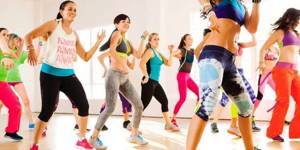
Workout structure
Zumba fitness for weight loss of any variety begins with a light warm-up. During this special exercise, the muscles are prepared for the load, warmed up, and tuned. This is followed by a small block of strength exercises accompanied by music selected by the instructor. It may include push-ups, squats, and exercises with dumbbells. The last is the dance block, where participants improvise, dance, stretch and relax. The homework scheme is selected independently, but according to the same principle. Sample training program:
- Warm up, including cardio and strength exercises.
- Repetition of movements mastered in the previous lesson.
- Mastering new movements.
- Combining the mastered elements into a Zumbo dance, to music selected by the trainer.
- The lesson ends with a complex of stretching (relaxing stretching).
Basic movements for beginners
Mastering the basic movements that make up all zumba complexes is the main stage for a beginner, because the effectiveness of the exercises and their results depend on the correct execution of the basic exercises. Zumba fitness warm-up for weight loss consists of the following elements:
- Small and wide side steps with a rotation of the body.
- Tilts to the right to the left with simultaneous rotation of the torso.
- Marching to the music, gradually engaging the arms and hips.
- Body turns, during which the dancer alternates on his toes and on his heels.
- "Skater". With your hands behind your back, sliding movements are performed in place, similar to movements during skating.
- Leg lunges followed by a jump - the technique can be seen in the photo.
The various Zumba movements should be performed easily, at a dynamic, fast pace, keeping in time with the music, watching your posture, and not forgetting that you are dancing. U-turns with lunges are made according to the following rules:
- Feet are placed shoulder-width apart, arms are lowered along the body.
- With your elbows bent, one foot is placed on the heel, and the other is lunged to the side and also placed on the heel.
- Putting one foot to the other, rising on your toes, turn your body to the left.
- After returning to the starting position, all movements are repeated in the other direction.
The technique of performing steps and clapping as part of the Zumba fitness complex for weight loss is based on the same principles (ease of movement, keeping the spine straight, intense speed of execution, getting into the rhythm of the music). Scheme of the exercise:
- Feet are shoulder-width apart, arms are lowered along the body.
- At the same time as you take a long step to the left, clap your hands in front of your chest.
- Place your left foot next to your right and clap again.
- Move alternately to the right and then to the left, performing two steps and two claps on each side.
Body turns with a heel-toe roll (twist) are repeated, like the previous exercises, alternately in one direction and then in the other, for 2-3 minutes. The exercise scheme is as follows:
- Spread your feet shoulder-width apart, lower your arms along your body.
- Bend your elbows, stand on your heels, and turn your body to the right.
- From this position, rise onto your toes and turn your body in the other direction (to the left).
- Sink back onto your heels and twist your body in the opposite direction (to the right).
- Repeat on the other side.
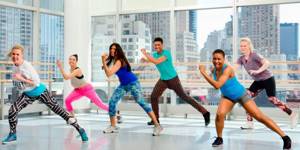
How many calories can you burn?
Depending on the intensity of the workout and the weight of the student, you can burn from 300 to 700 kcal in 1 hour of exercise. A girl weighing 60 kg will burn in an hour of exercise of varying intensity:
- low (when there is no tension when singing) - 410 kcal;
- medium (when there is no tension during a conversation) - 473 kcal;
- high, at which it is impossible to talk - 536 kcal.

For comparison, a girl weighing 60 kg burns on average in 1 hour of training:
- in the gym with heavy weights - 440 kcal;
- Tabata interval training - 480 kcal;
- jumping rope - 460 kcal;
- strength training at home - 300–360 kcal.
If you compare energy consumption with the popular jogging, then during a Zumba workout you burn about the same number of calories as you burn when jogging lightly for 1.5 hours.
For children
If you want to take your children away from computers and teach them a healthy lifestyle, Zumba fitness for kids will help you with this. Today there are several directions for children of different ages. For example, Zumba Kids classes are designed for children from 4 to 11 years old, Zumbini - from birth to 3 years old, and the Zumbatomic program is designed for children up to 12 years old.
Perhaps the child will be bored studying at home. Therefore, sign him up for the nearest fitness club, where he can not only exercise, but also communicate with peers.
Contraindications
Like any other sport, this type of fitness also has contraindications.
List of contraindications:
- serious pathologies of bone tissue;
- pregnancy;
- hypertension;
- heart pathologies;
- phlebeurysm;
- brain diseases.
Therefore, when you decide to go in for sports, choose your exercises wisely and consult your doctor. Start exercising with light loads, gradually increasing them. The main thing is to carefully monitor your well-being during training.
People suffering from:
- nervous disorders, brain diseases;
- heart pathologies;
- hypertension;
- thrombophlebitis;
- hernia;
- bone diseases;
- acute infections.
An untrained person under the influence of emotions may miss:
- increased heart rate to 160–180 beats/min;
- pale facial skin;
- shortness of breath that takes your breath away.
For those aged 40–50 years, a safe heart rate, which allows you to lose weight at the same time, is on average 110–130 beats/min.
In old age, with diseases of the heart and blood vessels, they choose the Zumba Gold program, which is characterized by a gentle load.
Zumba is dangerous for people suffering from stage 3-4 obesity. Excessive physical stress on the knees and ankles during jumping and lunging, of which there are many in Zumba, negatively affects the condition of the joints.
The program should be used with caution if there is a tendency to form blood clots. The risk of blood clots is increased if:
- varicose veins;
- pregnancy;
- dehydration due to excessive sweating.
Reviews and results of losing weight
In theory, Zumba for weight loss at home and in the gym is effective. But how do reviews of those who are already involved in fitness for weight loss rate it?
Irina Vladimirovna Fursenko, fitness trainer, Moscow
My acquaintance with Zumba began when I myself started thinking about losing weight. When I stepped on the scale, I realized that I urgently needed to do something about it. I signed up for classes and got so hooked that I decided to take a Zumba instructor training course and now teach myself. In addition, I have lost 15 kilograms and am completely happy with my body.
Elena Petrovna Zakharova, pensioner, Samara
I am 60 years old and for the past year my friend and I have been attending Zumba Gold classes for seniors. During this time, I radically changed my attitude towards life, began to look at the world and the people around me more positively, and stopped complaining about my health. I lead an active lifestyle and travel. I think this fitness complex is a wonderful invention that inspires millions of people around the world!
Maria Nikolaevna Kononova, housewife
After having a baby, I didn't have time to exercise. A friend gave me a CD with lessons using the Zuma Toning system. I started practicing and realized that Zumba for weight loss at home is the best option for women like me. I started with 1-2 classes a week, now I can’t live without 4. The weight is reduced, and the mood is always high.
Daria, 31 years old, Blagoveshchensk
I learned about Aqua-Zumba from an advertisement in the pool where I swim. I decided to get rid of 5 extra kilos, purchased a subscription and did not regret it. I liked dancing to the music, repeating the movements after the trainer. However, it was not possible to achieve a normal weight so quickly. It took me six months, but I continue training, and the results are encouraging.
Svetlana, 28 years old, Volgograd
I started taking Zumba a year after giving birth to lose 16 kg of weight. At first I trained at home myself for 2 weeks, every day for 20–30 minutes. This did not bring any special results other than a good mood. The effect appeared a month after I enrolled in the Zumba fitness group. So far I haven’t been able to lose all 16 kg, but I can already button up the clothes I wore before pregnancy.
Alla, 47 years old, Orenburg
The first time I took Zumba by accident, with my daughter, I immediately fell in love with this type of cardio. I won’t say that I immediately performed all the movements correctly, but no one paid attention to it. I decided to go to training and lose 25 kg. I’ve been working out for almost a year now, I stick to proper nutrition, but so far I’ve only managed to get rid of 7 kg. I’m going to continue training in a group, I’m learning Zumba Strong on my own using video lessons at home.
The benefits of dancing for losing weight and improving health
Like most forms of aerobic or cardio exercise, dancing has many health benefits, including weight loss.
Apart from burning a lot of calories, dancing can also increase your muscle strength. Building lean muscle mass can help you burn fat and tone your muscles.
Some of the health benefits of regular cardio exercise such as dancing include:
- increased endurance
- improved mobility and flexibility
- better sense of balance
- improved blood flow
- stronger immune system
- better quality sleep
- stress reduction
- reducing the risk of developing certain chronic conditions such as diabetes and heart disease
Dancing is also good for mental health. Aerobic exercise can help improve your mood and reduce your risk of depression.
Dancing has additional benefits because it is often performed in a social setting. Dancing with a partner or in a group can create a sense of community and help you feel more connected to other people.
And just as importantly, it's a fun activity. When you enjoy doing something, you are more likely to continue doing it. That's why dancing can be a great way to stay motivated when it comes to exercise for weight loss.
